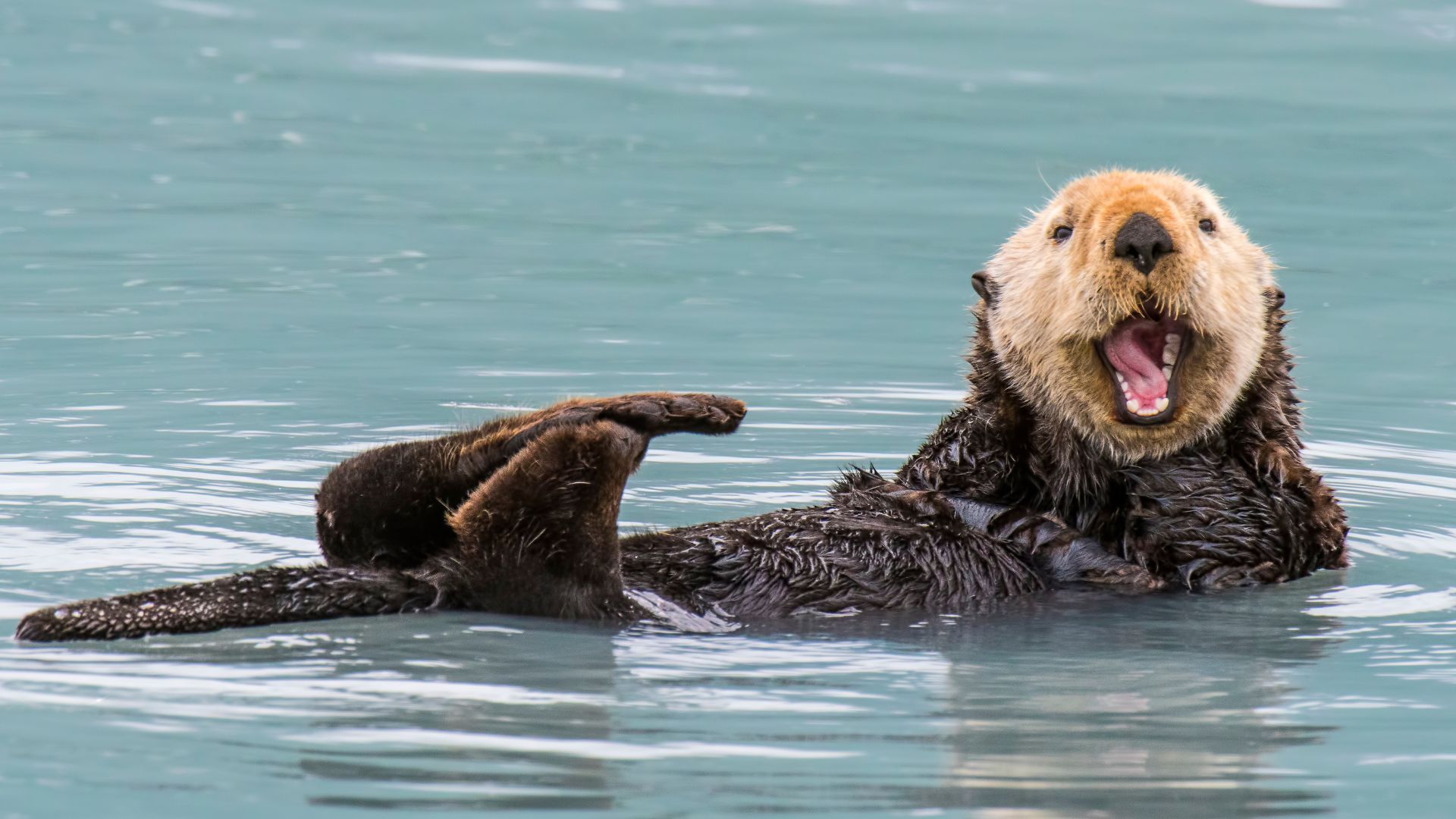In the vast tapestry of nature, there exist wild animals whose demeanor and actions endear them to humans and fellow creatures alike. These animals, often characterized by their gentle nature and playful antics, remind us of the beauty and kindness inherent in the animal kingdom.
Let us explore these wonderful beings and understand why they are considered some of the world’s nicest wild animals.
1. Quokka
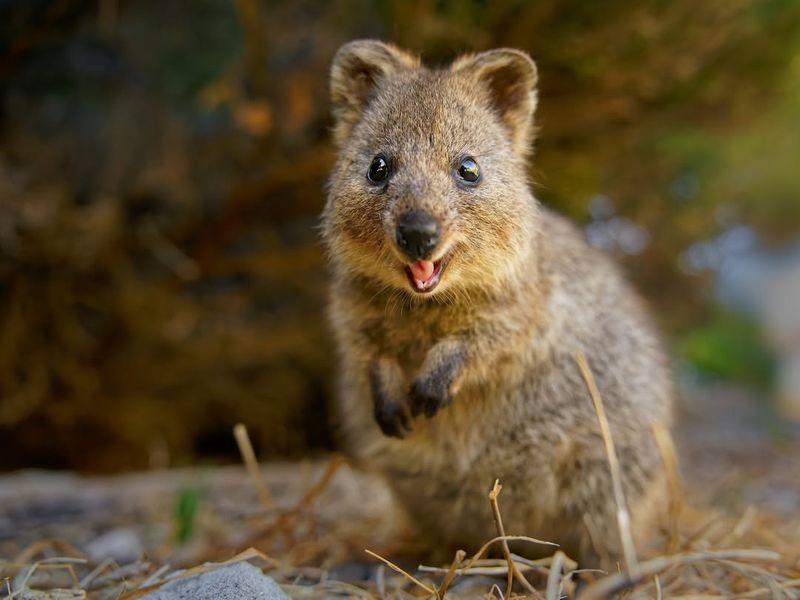
The quokka, a small marsupial native to Australia, is often dubbed the world’s happiest animal due to its seemingly smiling face. With its curious nature and friendly demeanor, the quokka is not afraid to approach humans, often seeking out interaction with visitors.
This makes them a favorite among tourists on Rottnest Island and other parts of their habitat. While they are indeed wild animals, quokkas display a level of trust and interaction that is rare among their peers. Quokkas are herbivores, feasting on a variety of vegetation, which contributes to their approachable and non-threatening nature.
Their social behavior is fascinating, as they often form small groups, enhancing their playful and communal image. Their ability to thrive in diverse environments showcases their adaptability. Despite their affable nature, it is crucial to respect their wild status and not disturb their natural lifestyle. Conservation efforts ensure that quokka populations remain stable.
Engaging with these delightful creatures in a responsible manner allows for an appreciation of their unique charm and the preservation of their natural habitat.
2. Capybara
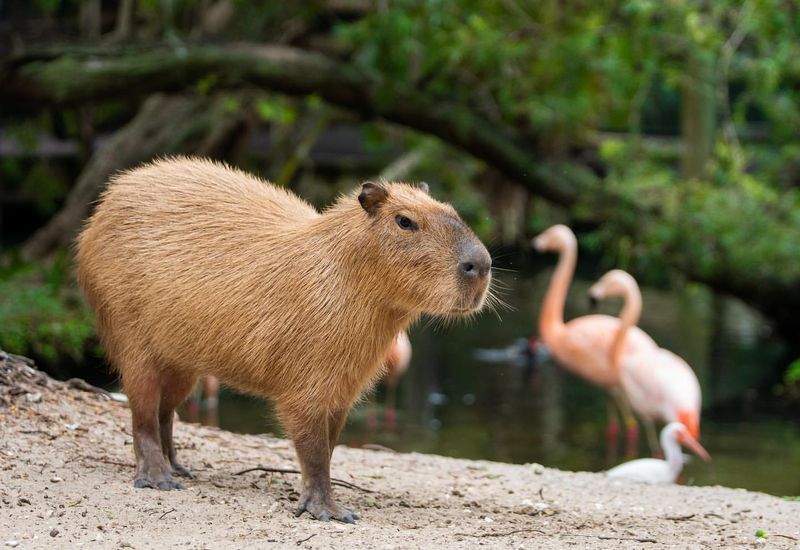
The capybara, the largest rodent in the world, has a reputation for being incredibly social and gentle. Native to South America, these creatures reside near bodies of water, often seen lounging in groups.
Their friendly disposition extends across species, as capybaras are known to interact peacefully with a variety of animals including birds, small mammals, and even crocodiles. Capybaras exhibit a remarkable ability to coexist with other species, often observed with birds perched on their backs. This symbiotic relationship highlights their role in the ecosystem as a species that promotes harmony.
Their semi-aquatic nature and webbed feet make them excellent swimmers, adding to their unique charm. Living in groups of 10-20, capybaras communicate through a series of vocalizations, demonstrating a complex social structure.
Their diet mainly consists of grasses, which they graze on in the early morning and late afternoon. Protecting these gentle giants involves safeguarding their wetland habitats from degradation, ensuring these amiable creatures continue to enchant us with their presence.
3. Axolotl
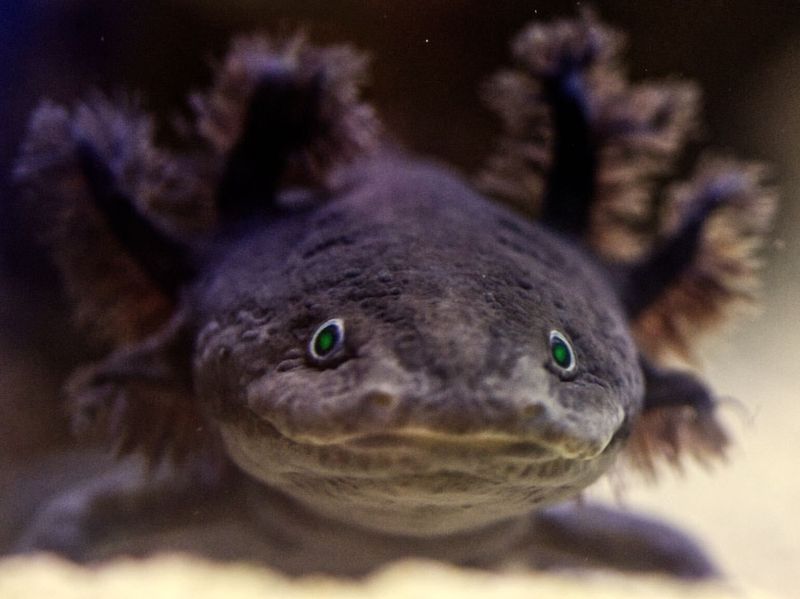
Axolotls, often referred to as Mexican walking fish, are intriguing aquatic creatures native to the lakes of Mexico. Known for their neotenic traits, axolotls retain their larval features throughout adulthood, such as gills and a finned tail.
This unique aspect contributes to their adorable appearance, often captivating those who observe them. These creatures are not only known for their distinct looks but also for their regenerative abilities. Axolotls can regenerate lost limbs, spinal cords, and even portions of their hearts and brains, a trait that has sparked scientific interest worldwide.
Their calm demeanor and low-aggression levels make them popular in both research and as exotic pets. In their natural habitat, axolotls are facing threats from urbanization and pollution. Conservation efforts are essential to preserve their delicate ecosystem in the wild.
By understanding and protecting their environments, we can ensure that future generations get to experience the wonder of axolotls and their remarkable regenerative capabilities.
4. Manatee
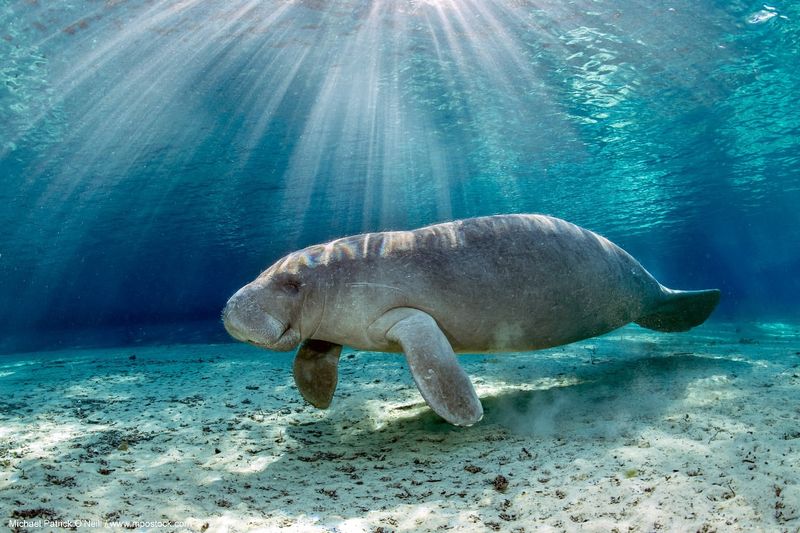
Manatees, affectionately known as sea cows, are gentle giants of warm coastal waters and slow-moving rivers. With their large, rounded bodies and paddle-shaped tails, manatees move gracefully through the water, grazing on aquatic plants.
Their slow, unhurried movements and friendly nature have endeared them to many. These marine mammals are known for their curiosity and interaction with human divers, often approaching boats without fear.
Manatees’ social behavior includes forming loose groups, which adds to their peaceful image. Their serene presence and herbivorous diet make them non-threatening to other marine creatures. Despite their size, manatees are vulnerable to human-related threats such as boat collisions and habitat destruction.
Conservation initiatives aim to protect manatee habitats and raise awareness about their plight. By supporting these efforts, we contribute to the preservation of these gentle ocean inhabitants and ensure they continue to thrive in their natural habitats.
5. Dolphin
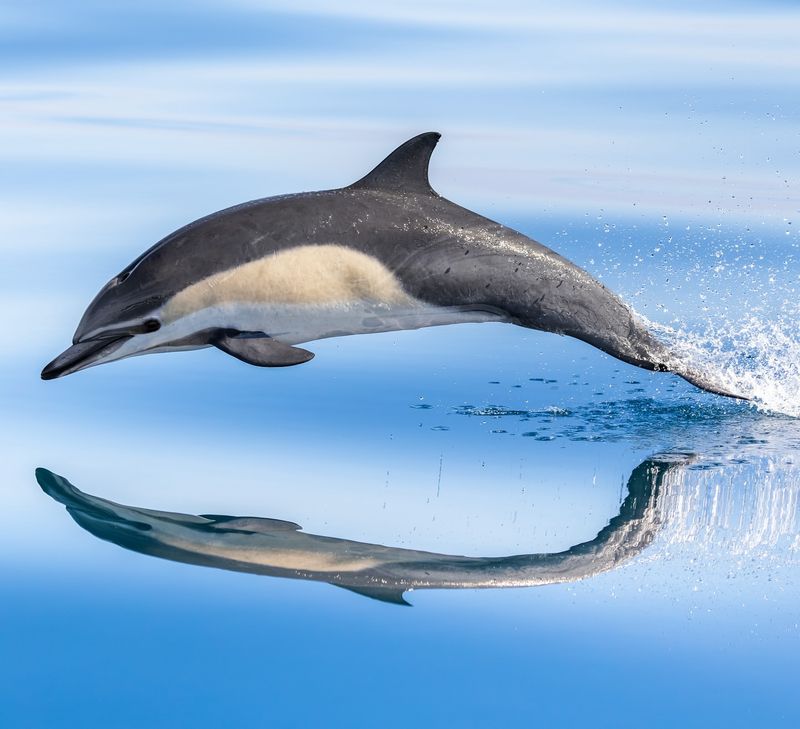
Dolphins, known for their intelligence and playful nature, are beloved marine mammals found in oceans worldwide. Their sociable behavior and complex communication skills have fascinated humans for centuries. Dolphins live in pods, showcasing strong social bonds and cooperative behaviors, such as hunting and caregiving.
Their playful antics, like riding waves and leaping out of the water, captivate onlookers and often lead to interactions with humans. Dolphins are also known for their remarkable problem-solving abilities and have been observed using tools in the wild, demonstrating their cognitive prowess.
However, dolphins face numerous threats, including habitat degradation and entanglement in fishing gear. Conservation programs focus on protecting their natural environments and ensuring sustainable fishing practices.
By working to preserve dolphin habitats, we guarantee that these charismatic creatures continue to enchant and inspire future generations.
6. Red Panda
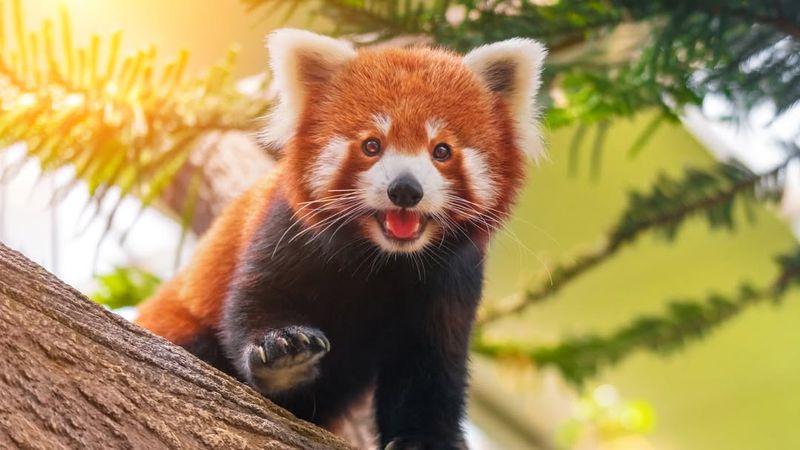
Red pandas, with their striking reddish-brown fur and bushy tails, are enchanting creatures native to the Himalayan region. Despite their name, red pandas are not closely related to giant pandas; instead, they belong to their own unique family.
These arboreal animals are most active during dawn and dusk, spending much of their time in trees. Red pandas are primarily bamboo eaters, though they also consume fruits, acorns, and insects. Their solitary nature and shy demeanor add to their mysterious charm. Despite their reclusive behavior, they possess a playful side, often seen frolicking in the trees or rolling about on the forest floor.
Habitat loss and fragmentation pose significant threats to red panda populations. Conservation organizations are working diligently to protect their natural habitats and promote awareness of their conservation status. By supporting these efforts, we help ensure the survival of these adorable animals and maintain the biodiversity of their mountainous ecosystems.
7. Koala
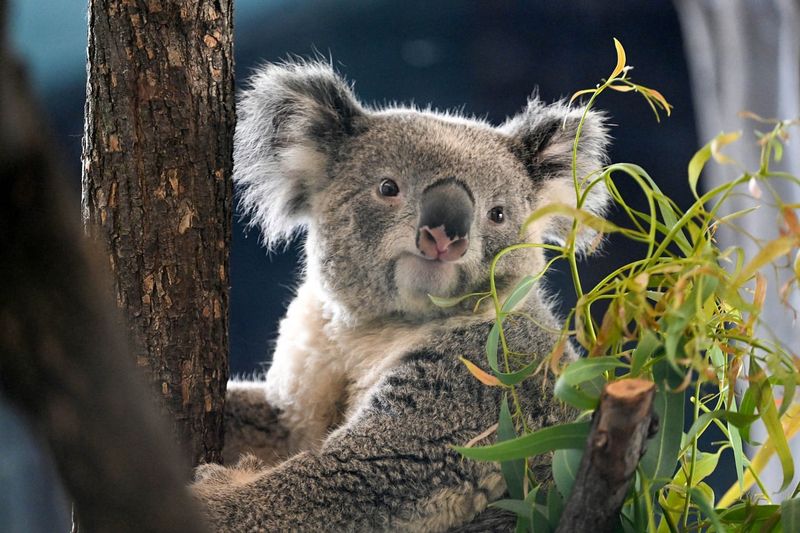
With their distinctive fluffy ears and noses, koalas are iconic marsupials native to Australia. Often found in eucalyptus forests, these adorable creatures are known for their calm and sedentary lifestyles, spending most of their time sleeping in trees.
Koalas have a highly specialized diet, feeding primarily on eucalyptus leaves. Their slow-paced lifestyle is a result of their low-energy diet, which requires them to rest for up to 18 hours a day. Koalas are solitary animals, each having its own home range, though they occasionally interact during the breeding season.
Despite their solitary nature, their endearing appearance and gentle demeanor make them a favorite among wildlife enthusiasts. Koalas face threats from habitat destruction, disease, and climate change. Conservation initiatives aim to protect their habitats and ensure their populations remain stable.
By supporting these efforts, we contribute to the preservation of koalas and ensure future generations can enjoy their unique presence in the wild.
8. Binturong
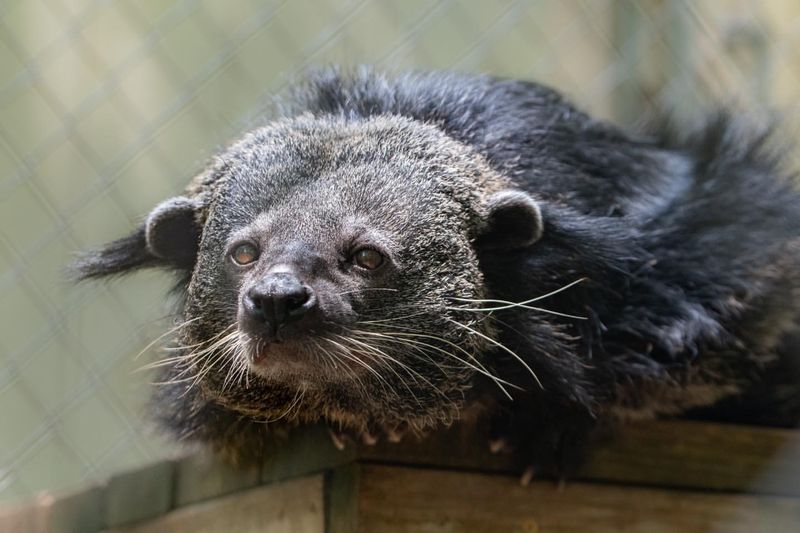
The binturong, also known as the bearcat, is a unique mammal found in the forests of Southeast Asia. With its long, bushy tail and musky scent reminiscent of popcorn, the binturong is a fascinating creature. These animals are primarily arboreal, spending much of their time in trees where they move with surprising agility. Binturongs are omnivores, feeding on fruits, small animals, and plants.
Their prehensile tail aids in climbing and provides balance as they navigate the forest canopy. Despite their solitary nature, binturongs communicate through vocalizations and scent markings, maintaining territories and avoiding conflicts with others.
Habitat loss and poaching pose significant threats to binturong populations. Conservation efforts focus on protecting their natural habitats and raising awareness about their ecological role. By supporting these initiatives, we help ensure the survival of binturongs and the continued biodiversity of Southeast Asian forests.
9. Slow Loris
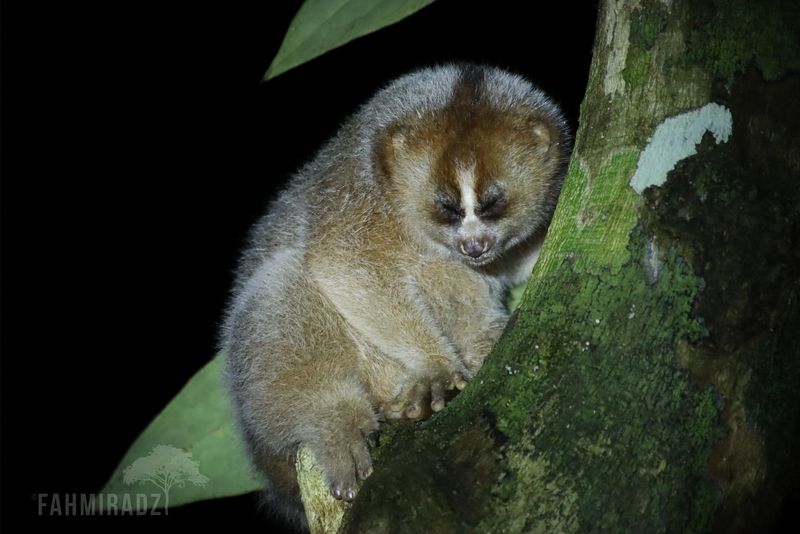
The slow loris, a small primate found in Southeast Asia, captivates with its large eyes and gentle nature. These nocturnal creatures have a unique ability to move slowly and silently through the forest canopy, relying on their keen senses to hunt for insects and fruits during the night.
Despite their cute appearance, slow lorises possess a toxic bite, a rare trait among mammals. This defense mechanism is a reminder of their wild nature and the need for caution when interacting with them. Slow lorises are solitary animals, preferring to navigate the treetops alone or with their young.
Illegal wildlife trade and habitat destruction pose severe threats to slow loris populations. Conservation programs focus on protecting their natural habitats and curbing the illegal pet trade. By supporting these efforts, we contribute to the preservation of slow lorises and the delicate ecosystems they inhabit.
10. Giant Panda
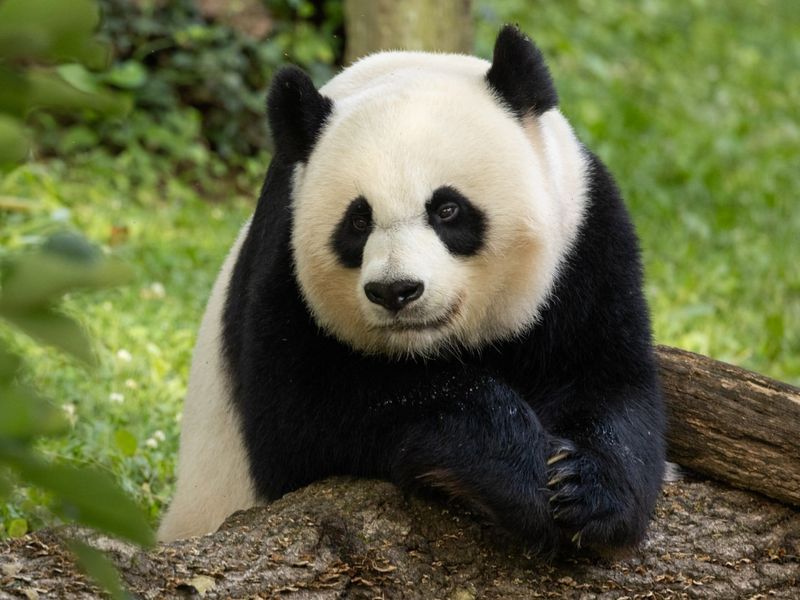
Giant pandas, with their iconic black and white fur, are beloved symbols of wildlife conservation. Native to China’s bamboo forests, these gentle giants spend most of their days eating bamboo, their primary diet. Despite their size, giant pandas are known for their gentle temperament and solitary nature.
Their unique adaptations, such as an extended wrist bone functioning as a thumb, allow them to grasp bamboo efficiently. Giant pandas communicate through vocalizations and scent markings, maintaining territories and finding mates during the breeding season.
Their playful antics and endearing appearance have made them a favorite among animal lovers worldwide. Habitat destruction and a limited diet pose significant threats to giant panda populations.
Conservation efforts have been successful in increasing their numbers, focusing on habitat restoration and protection. By supporting these initiatives, we help ensure the survival of giant pandas and the preservation of their natural habitats.
11. Sea Otter
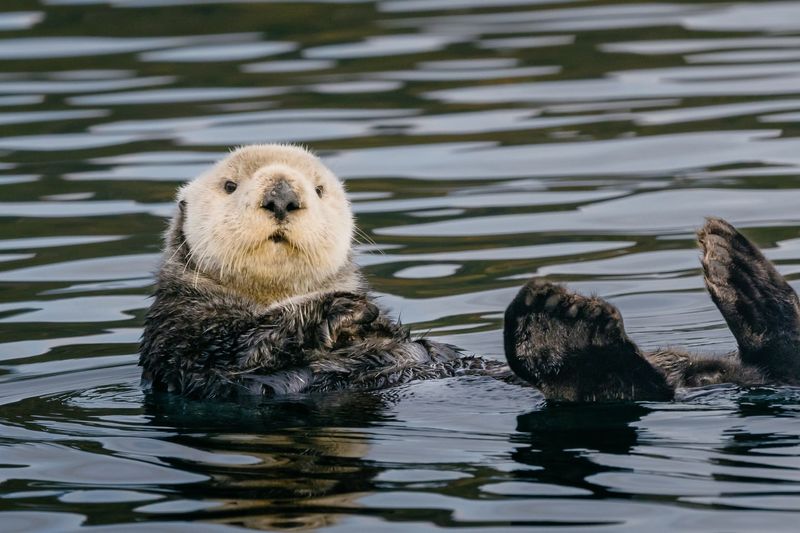
Sea otters, the smallest marine mammals, are known for their playful behavior and tool-using abilities. Found along the coasts of the Pacific Ocean, these creatures are often seen floating on their backs, cracking open shellfish with rocks.
Their dense fur, the thickest of any animal, keeps them warm in chilly waters. Sea otters play a crucial role in maintaining the health of kelp forest ecosystems by controlling sea urchin populations.
Their playful interactions and social behavior, including holding hands while sleeping to stay together, endear them to wildlife watchers. Oil spills, pollution, and habitat loss threaten sea otter populations.
Conservation programs focus on protecting their habitats and promoting awareness of their ecological importance. By supporting these efforts, we help ensure the survival of sea otters and the balance of the marine ecosystems they inhabit.
12. Indian Star Tortoise
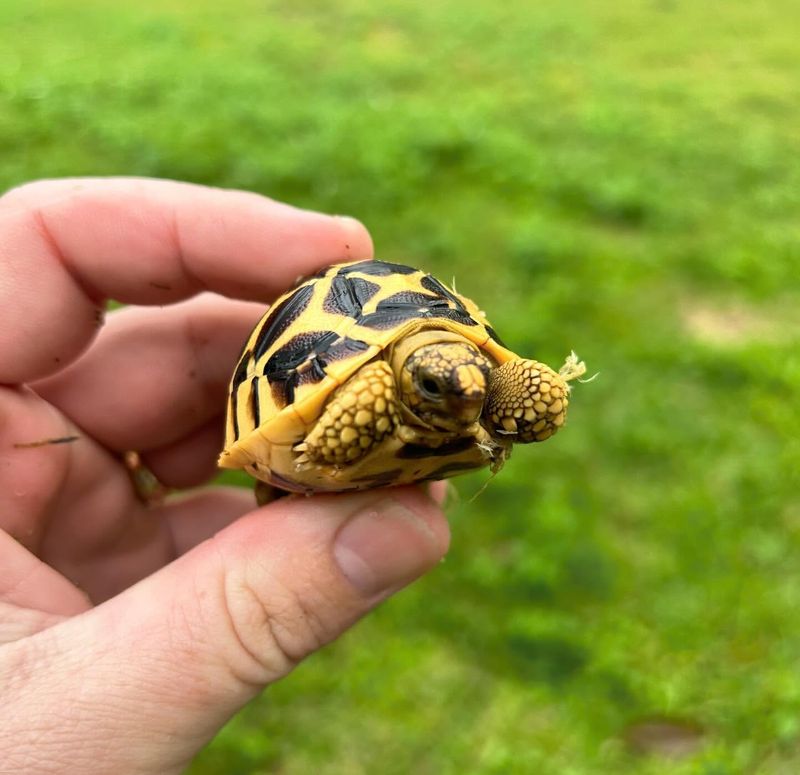
The Indian star tortoise is a strikingly beautiful reptile, native to the dry regions of India and Sri Lanka. Its shell features a unique star-like pattern, making it one of the most visually captivating tortoises. These reptiles are primarily herbivorous, feeding on grasses, fruits, and vegetables.
Indian star tortoises are known for their docile nature, often keeping to themselves and avoiding conflict. Their hard shells provide protection from predators, enabling them to lead relatively safe lives in the wild. These tortoises are adapted to arid environments, able to survive with minimal water intake.
Illegal poaching and habitat destruction are significant threats to Indian star tortoise populations. Conservation efforts focus on protecting their habitats and regulating the pet trade. By supporting these initiatives, we contribute to the preservation of these stunning reptiles and the ecosystems they call home.
13. Three-Toed Sloth
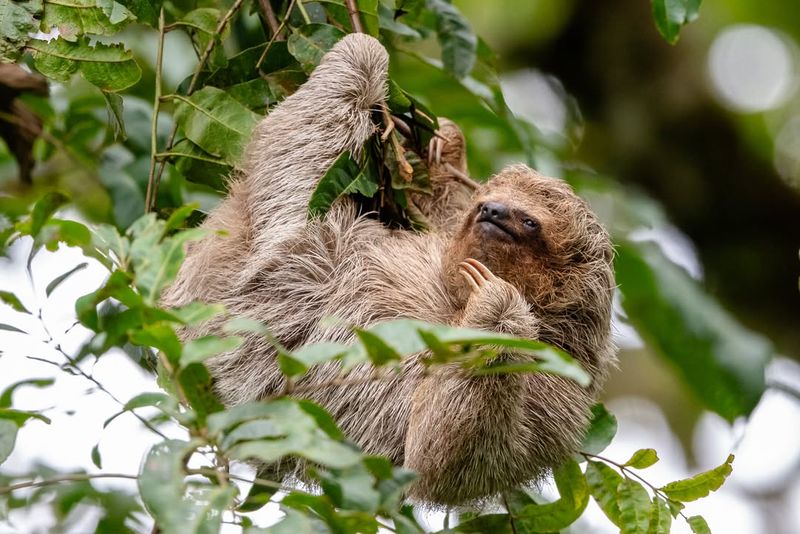
Three-toed sloths, native to Central and South American rainforests, are known for their incredibly slow movements and laid-back lifestyle. They spend most of their lives hanging upside down from tree branches, moving slowly to conserve energy.
This unique adaptation allows them to thrive in their arboreal habitats. Their diet consists mainly of leaves, which are difficult to digest and provide little energy, contributing to their slow-paced existence. Three-toed sloths have a specialized stomach with multiple compartments to aid in digestion, allowing them to extract the maximum nutrients from their food.
Deforestation and habitat fragmentation pose significant threats to sloth populations. Conservation efforts focus on protecting their habitats and raising awareness about their unique ecological niche. By supporting these initiatives, we help ensure the survival of three-toed sloths and the preservation of their rainforest homes.
14. Tree Kangaroo
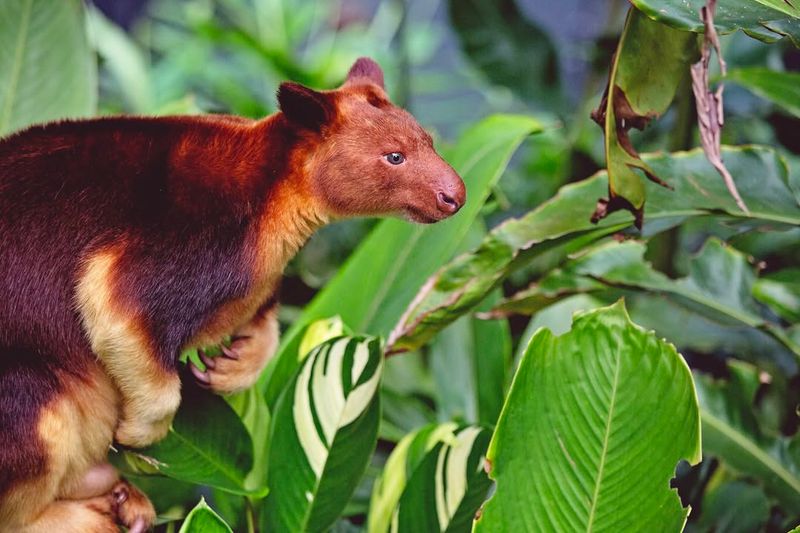
Tree kangaroos, native to the rainforests of Papua New Guinea and Australia, are fascinating marsupials adapted to an arboreal lifestyle. Unlike their ground-dwelling relatives, tree kangaroos have powerful limbs and long tails that aid in climbing and jumping between trees.
These marsupials are herbivores, feeding on leaves, fruits, and flowers found in the forest canopy. Their solitary nature and elusive behavior make them a rare sight, adding to their mystique. Tree kangaroos play a vital role in their ecosystems by aiding in seed dispersal and maintaining the balance of forest vegetation.
Habitat destruction and hunting pose significant threats to tree kangaroo populations. Conservation programs focus on protecting their habitats and promoting sustainable land-use practices. By supporting these efforts, we help ensure the survival of tree kangaroos and the biodiversity of their rainforest environments.
15. African Grey Parrot
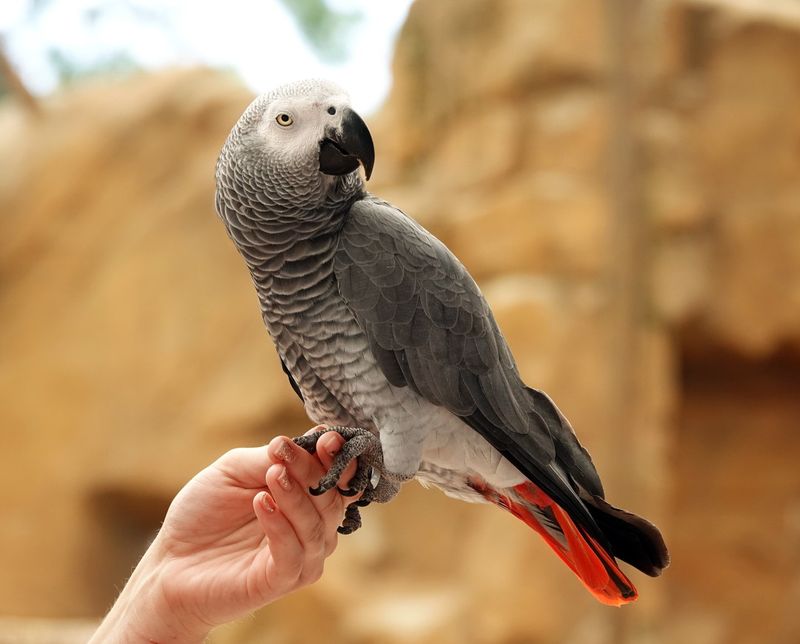
The African grey parrot is renowned for its intelligence and impressive vocal abilities. Native to the dense forests of West and Central Africa, these birds are adept mimics, capable of learning and repeating a wide range of sounds and human speech.
African grey parrots are highly social, forming strong bonds with their flock members. This social behavior extends to their interactions with humans, making them popular pets. However, their intelligence requires mental stimulation and social interaction to prevent boredom and stress. Habitat loss and the illegal pet trade threaten African grey parrot populations.
Conservation efforts focus on protecting their natural habitats and regulating the pet trade. By supporting these initiatives, we contribute to the preservation of these remarkable birds and their forest ecosystems.
16. Meerkat
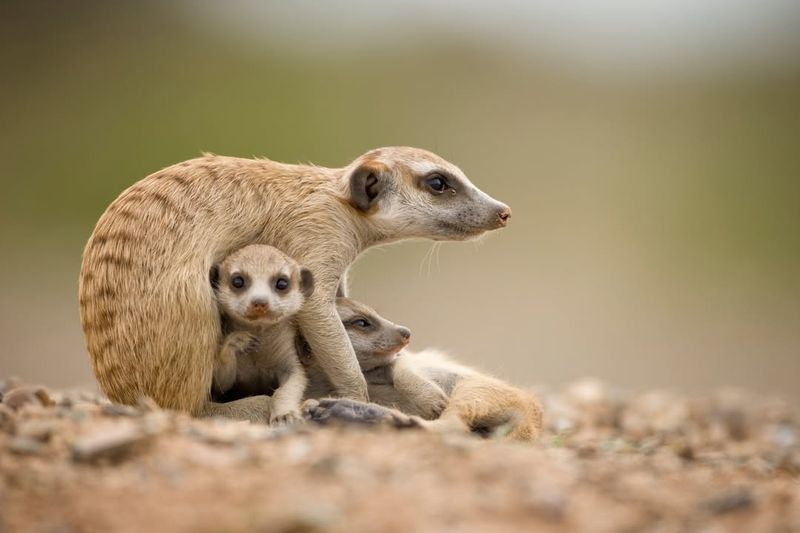
Meerkats, with their slender bodies and inquisitive nature, are social mammals found in the arid regions of southern Africa. They live in large groups called mobs or gangs, displaying a strong sense of community and cooperation.
Meerkats are known for their sentinel behavior, where one member stands guard while others forage or rest. Their diet consists of insects, small mammals, and fruits, showcasing their adaptability to harsh desert environments. Meerkats communicate through a variety of vocalizations, coordinating their activities and alerting each other to potential dangers.
Predation and habitat fragmentation pose challenges to meerkat populations. Conservation efforts focus on protecting their habitats and understanding their social dynamics. By supporting these initiatives, we contribute to the preservation of meerkats and their unique social structures.
17. Alpaca
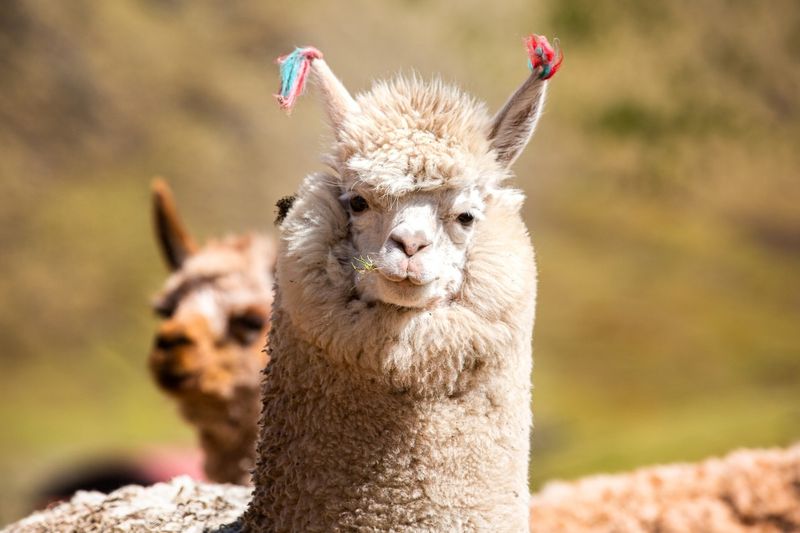
Alpacas, domesticated members of the camelid family, are native to the high Andes of South America. Known for their soft, fluffy coats, alpacas are primarily raised for their luxurious fiber, which is used to make textiles.
These gentle animals are social creatures, often found in herds grazing on mountain grasses. Alpacas are known for their calm and friendly demeanor, making them popular among farmers and hobbyists alike. Their ability to adapt to harsh mountainous environments and their low-impact grazing habits contribute to sustainable farming practices.
Despite being domesticated, alpacas face challenges from climate change and habitat loss. Conservation programs focus on preserving traditional farming practices and protecting their native habitats. By supporting these efforts, we help ensure the continued success of alpacas and the communities that rely on them.
18. Pygmy Goat
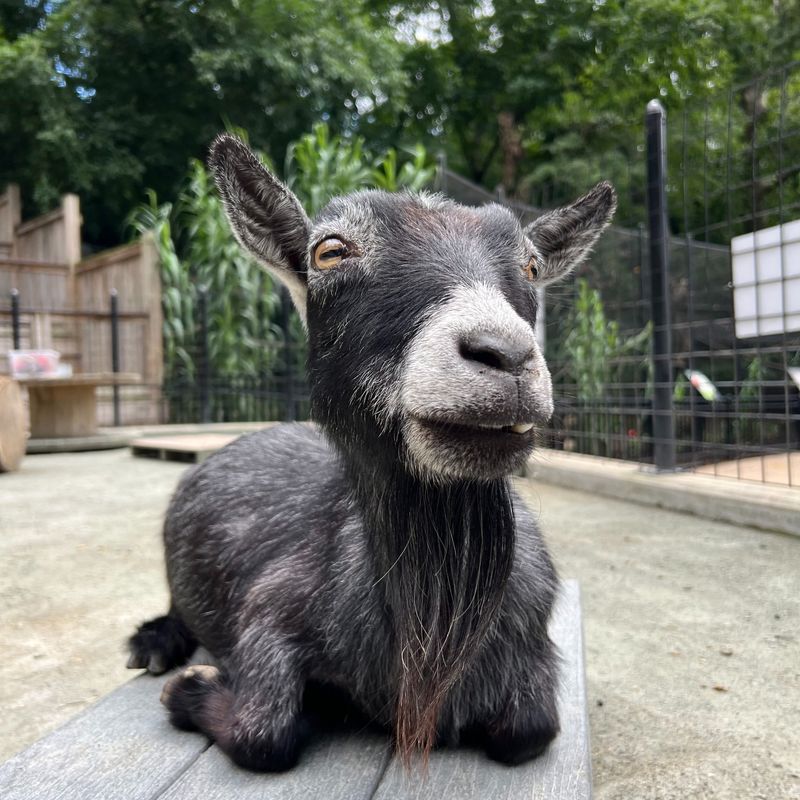
Pygmy goats, originally from West Africa, are small, hardy goats known for their playful and friendly nature. These goats have become popular as pets and for small-scale farming due to their manageable size and sociable temperament.
Pygmy goats are highly adaptable and can thrive in a variety of environments, making them ideal for hobby farms and petting zoos. Their diet consists of grasses, leaves, and shrubs, contributing to their low-maintenance care requirements. Their playful antics and affectionate behavior endear them to humans, making them delightful companions.
Breeding programs and responsible ownership practices are essential to maintaining healthy pygmy goat populations. By supporting ethical farming and pet ownership practices, we help ensure the well-being of pygmy goats and their enjoyment by future generations.
19. Kinkajou
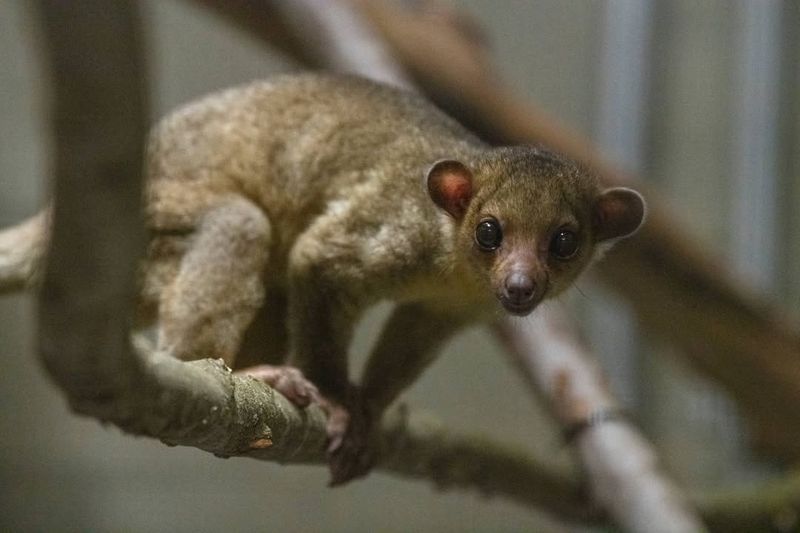
The kinkajou, a nocturnal mammal native to Central and South American rainforests, is known for its playful and curious nature. Often referred to as ‘honey bears,’ kinkajous have a sweet tooth, enjoying fruits and nectar as part of their diet.
With their prehensile tails and dexterous limbs, kinkajous navigate the treetops with ease, searching for food and exploring their environment. Their social behavior includes grooming and playing with other kinkajous, highlighting their affectionate nature.
Deforestation and the exotic pet trade pose threats to kinkajou populations. Conservation efforts aim to protect their habitats and promote awareness about their ecological role. By supporting these initiatives, we help ensure the survival of kinkajous and the rich biodiversity of their rainforest homes.
20. Tamandua
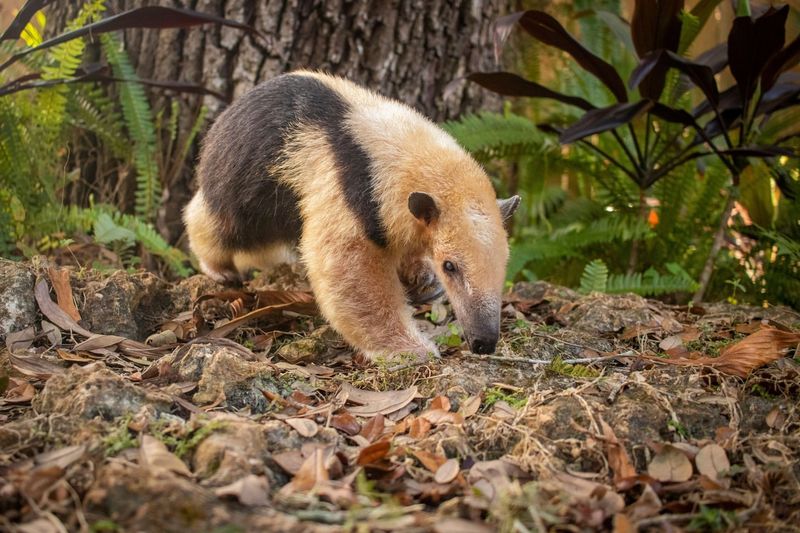
The tamandua, a small anteater native to Central and South America, is known for its specialized diet of ants and termites. These creatures are well-adapted to arboreal and terrestrial habitats, using their long, prehensile tails to navigate the forest canopy.
Tamanduas are solitary animals, relying on their keen sense of smell to locate food. Their long snouts and sticky tongues allow them to extract insects from narrow crevices. Despite their solitary nature, tamanduas play a crucial role in controlling insect populations, maintaining ecological balance in their habitats.
Habitat destruction and illegal hunting threaten tamandua populations. Conservation efforts focus on protecting their natural environments and promoting sustainable land-use practices. By supporting these initiatives, we help ensure the survival of tamanduas and the preservation of their forest ecosystems.
21. Bonobo
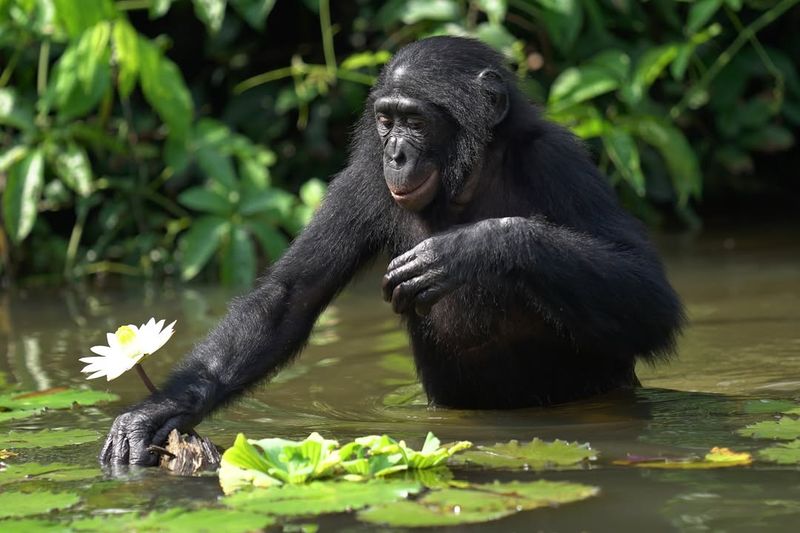
Bonobos, closely related to chimpanzees, are known for their peaceful and cooperative social structure. Native to the dense forests of the Democratic Republic of Congo, bonobos exhibit remarkable empathy and strong social bonds within their groups.
These primates communicate through vocalizations, gestures, and facial expressions, showcasing their complex social interactions. Bonobos are primarily frugivorous, feeding on a variety of fruits, leaves, and small animals. Their societies are matriarchal, with females playing a central role in group dynamics. Habitat destruction and illegal hunting threaten bonobo populations.
Conservation efforts focus on protecting their habitats and promoting awareness of their unique social systems. By supporting these initiatives, we contribute to the preservation of bonobos and the incredible biodiversity of their forest habitats.

